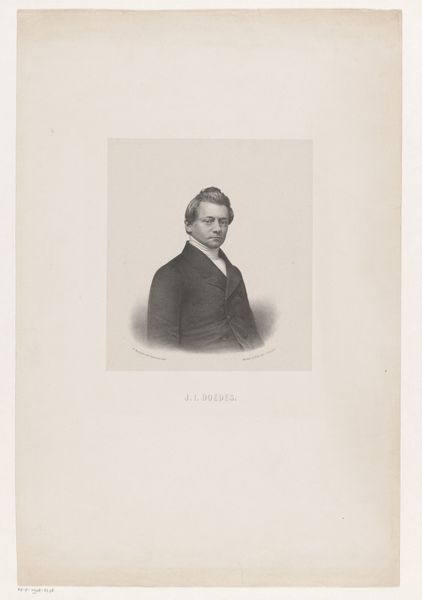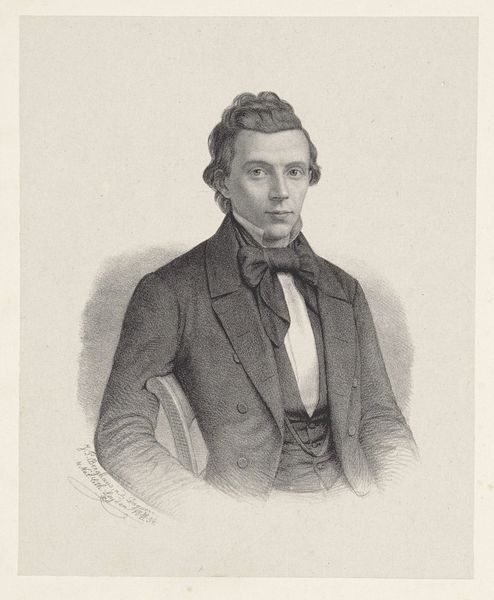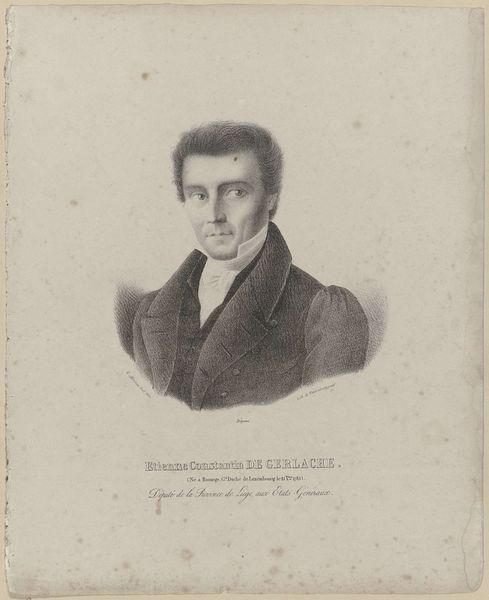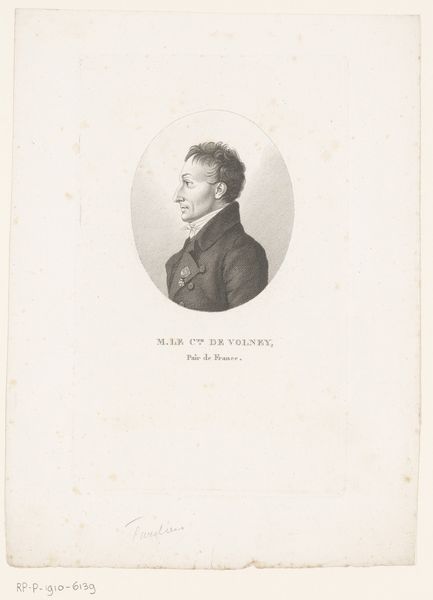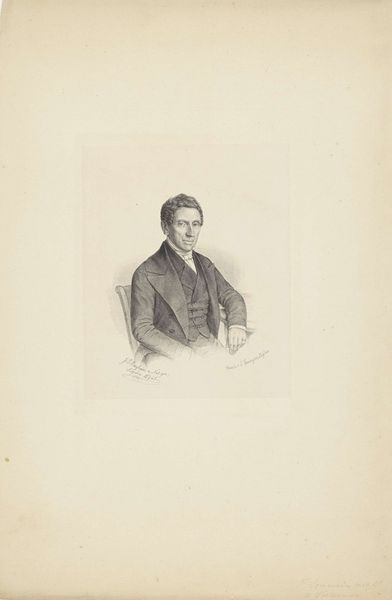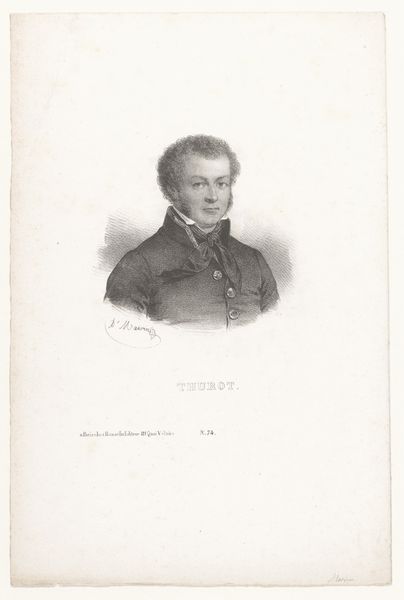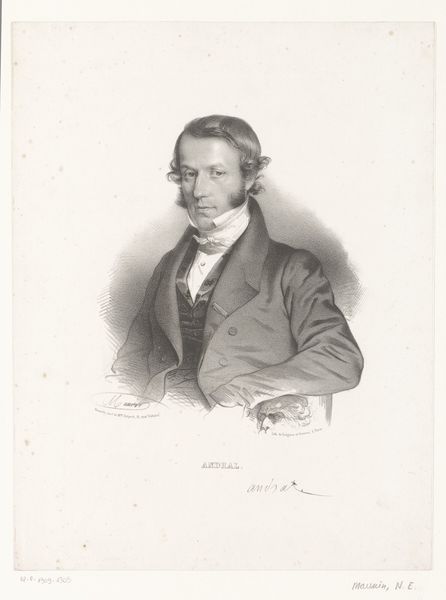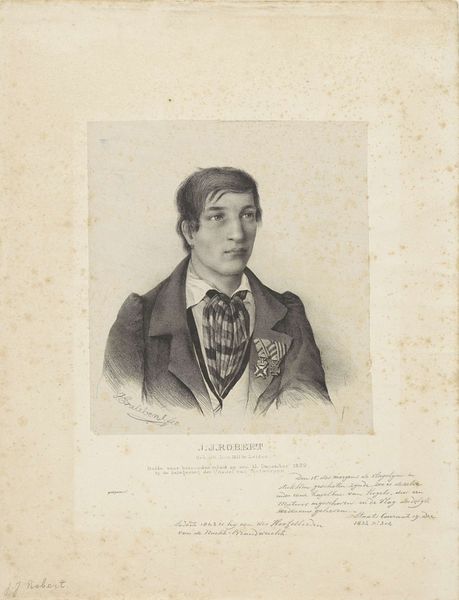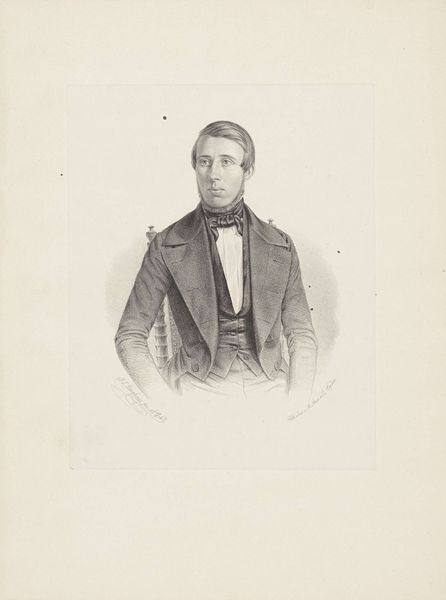
engraving
#
portrait
#
neoclacissism
#
old engraving style
#
history-painting
#
engraving
Dimensions: height 344 mm, width 274 mm
Copyright: Rijks Museum: Open Domain
Curator: Standing before us, we have an engraving from 1829. It depicts Félix Amand De Mûelenaere, a figure who was a deputy of Flanders during his time. Editor: It’s quite formal, even severe. The monochrome palette contributes to that, and he looks almost unnervingly intelligent behind those spectacles. Curator: As an engraving, we should consider the labour that goes into the artwork. The meticulous crafting with the plate, the intense precision, the hand that carefully cut each line, really, one needs to think about the etcher or engraver and how those techniques were employed. These works are time consuming and require dedication and expertise. Editor: Indeed, the precision is remarkable, especially for mass reproduction. Given Mûelenaere’s role in government, it makes sense to understand how this image functioned in the political landscape. Was it widely circulated, and how did it contribute to his public persona and the broader dynamics within the shifting politics of Belgium at the time? What values did his costume represent? Curator: Exactly. Furthermore, looking closely we can analyze the qualities of the materials. The quality of the paper, the ink, all of these materials indicate the quality and production value for such works, speaking to what purposes they served. It shows the artist's skill in modulating line thickness to convey depth and texture within this very medium. Editor: And we can infer quite a bit from his stern visage. The man exudes seriousness! I would want to place the subject within his social network and milieu, thinking about the prevailing power dynamics. His very appearance signifies an appeal to a specific educated social stratum, especially given how carefully considered and conservative it all is. He appears as both learned, progressive, and yet refined, almost aristocratic, does he not? Curator: Of course, these printed images served as propaganda pieces of their day. They served both economic and political functions and should be examined from both angles in terms of labor and in terms of the political message being promoted at the time. Editor: Absolutely. In looking at how this portrait represents Mûelenaere, what's presented—and what's concealed—reflects both the personal narrative and the evolving political currents that informed his identity and influence in the Belgian historical framework. Curator: Precisely, seeing how the material conditions influenced what kind of image, message, and propaganda would ultimately exist. It opens an opportunity for interpretation on every front. Editor: I agree. Now I leave with a greater sense of how a simple engraving speaks volumes on both material craftsmanship and layered narratives.
Comments
No comments
Be the first to comment and join the conversation on the ultimate creative platform.
